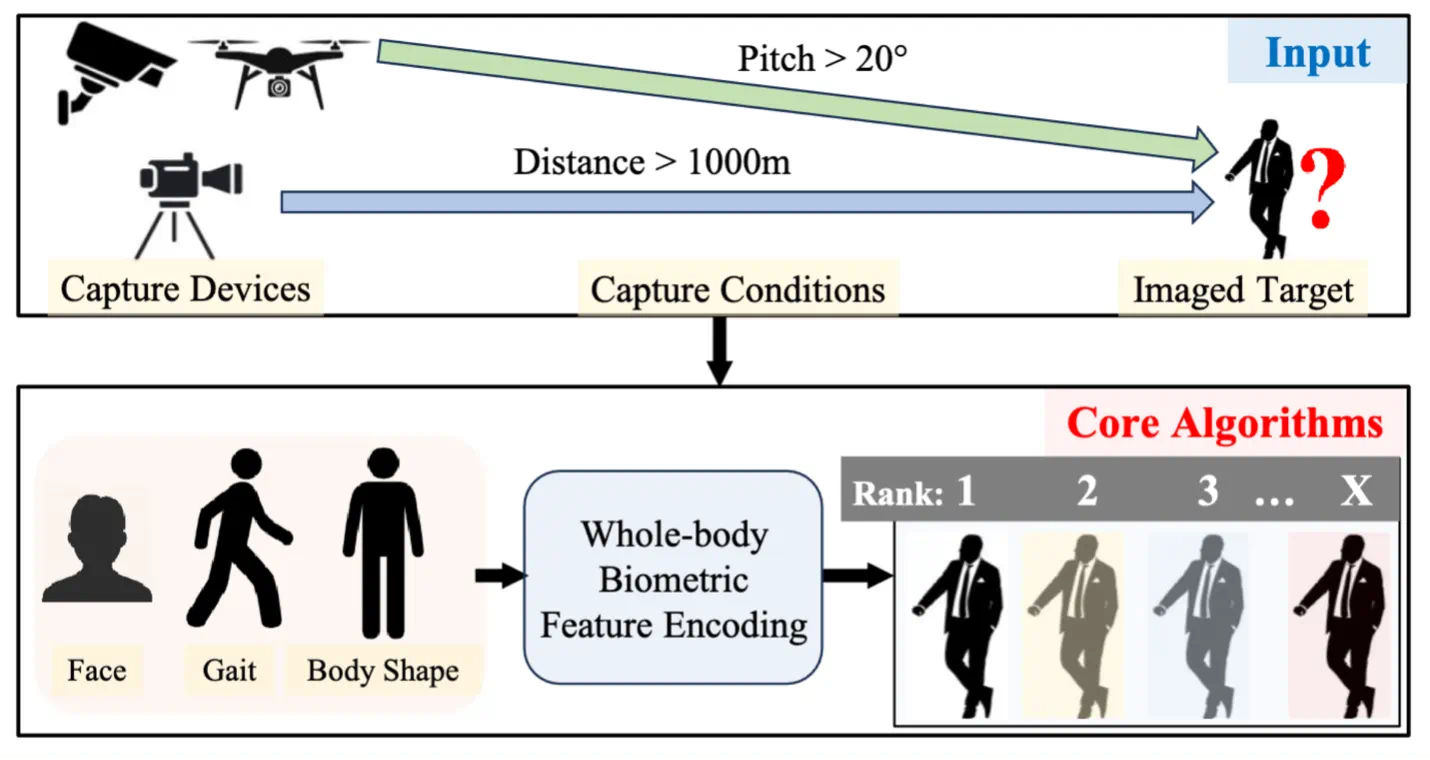Michigan State University researchers received a $12 million, four-year federal grant from the Intelligence Advanced Research Projects Activity, or IARPA, under its Biometric Recognition and Identification at Altitude and Range, or BRIAR, program.
The IARPA BRIAR program is a 48-month effort to deliver end-to-end software systems capable of detecting individuals at severe imaging conditions, extracting biometric signatures from the whole-body (such as an individual’s gait and/or body shape) and face, and fusing biometric information for robust multi-modal matching.
The MSU project entitled “Physics-driven Modeling and Learning for Person Recognition at a Distance and Altitude” is led by Xiaoming Liu, an MSU Research Foundation Professor; Arun Ross, Martin J. Vanderploeg Endowed Professor; and Anil Jain, a University Distinguished Professor — all in the College of Engineering.
Biometric recognition refers to technology for real-time and automated recognition of individuals based on their body attributes such as face, fingerprints and iris. We use biometrics when we unlock our mobile phones using face or fingerprints, board international flights and go through immigration after returning from an overseas trip. In these applications, the camera or sensor needs to be in close proximity to the individual being recognized. But what about situations when law enforcement agencies want to find a missing person in the woods or locate a group of fugitives?
The MSU BRIAR team incorporated the use of drone technology for recognizing individuals at a distance. While the elevated imaging platforms increased the altitude and range, this vantage point often only showed the tops of people’s heads, making it difficult to identify any distinguishing facial features from one person to another.

This, according to Liu, necessitated the use of whole-body biometric recognition. “When we combined the benefits of each of the three biometric modalities (face, body shape and gait), we were able to achieve state-of-the-art accuracy as reported in the independent evaluation conducted by IARPA on sequestered data,” he said.
MSU’s system, called FarSight, accepts videos from drones as input and outputs a candidate list of identities from a database. To build this prototype system, the MSU team had to address a number of challenges, including low-quality imagery, atmospheric turbulence, large variations in viewing angle and distance, and limited amount of operational data to train the recognition system.

“We have developed a successful prototype system that can look at one person from about 300 to 400 meters away,” said Liu. “During the next phase of the project, we’ll be looking at multiple people together at a range of 600 to 700 meters.
As the team improves the range and accuracy of the system, it is also learning the relative strengths of various biometric measurements in images captured at different viewpoints.
“We were surprised to learn that a person’s height, build and gait often contain more useful biometric information than their face when capturing images from a long distance,” said Liu.
MSU’s team, which serves as the lead institution for this project, also includes Christopher Perry in the Department of Computer Science and Erin Bunting and Robert Goodwin in MSU’s Remote Sensing and Geographic Information Systems Center. Other researchers and personnel for the project include Stanley Chan at Purdue University, Atlas Wang at the University of Texas at Austin and Humphrey Shi at the Georgia Institute of Technology.
This article was originally published on MSU Today.
About the MSU Innovation Center:
The MSU Innovation Center is dedicated to fostering innovation, research commercialization, and entrepreneurial activities from the research and discovery happening across our campus every day. We act as the primary interface for researchers aiming to see their research applied to solving real-world problems and making the world a better place to live. We aim to empower faculty, researchers, and students within our community of scholars by providing them with the knowledge, skills, and opportunities to bring their discoveries to the forefront. Through strategic collaborations with the private sector, we aim to amplify the impact of faculty research and drive economic growth while positively impacting society. We foster mutually beneficial, long-term relationships with the private sector through corporate-sponsored research collaborations, technology licensing discussions, and support for faculty entrepreneurs to support the establishment of startup companies.
Is your organization interested in sponsoring further biometrics research at MSU? Click Here.

